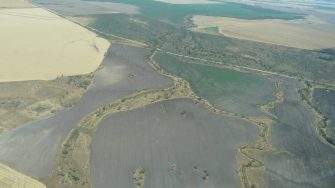
Date: Monday, November 16, 2015
Project: Eastern Australian Waterbird Survey
Observer: Terry Korn
Everyone has unfinished business and so it was for us today. Before we could head to the Darling part of the Murray-Darling Basin to begin counting its major wetlands, we had to complete counting on Band 4 of the Eastern Australia Water Bird Survey. This entailed flying the Myall River and the Myall Lakes just north of Port Stephens.
A freshly washed costal landscape bedazzled us with its crispness and beauty as we negotiated clearance from the Williamstown RAAF base to fly in the restricted zone of the Myall Lakes. Early in October we were refused clearance, hence our flight today to this wonderful area of natural beauty.
After about 25 minutes our job was done but huge cumulonimbus clouds stood in our path to Goondiwindi, leaving us no option but to climb over them at 8000ft so we could safely make the two hour flight to Boobera Lagoon on the Macintyre River. Of huge cultural importance to the Gamilraay people of this area, this snake like lagoon is believed to be the birthplace of Garriya, the rainbow serpent. It was also an important initiation site and is now an Aboriginal Place under NSW law. Pelicans, cormorants, Pacific black duck and grey teal also consider it important because of the feeding and breeding opportunities it provides.
Boobera Lagoon, birthplace of Garriya, the Rainbow Serpent Photo: Terry Korn
From there, it was down to the Gwydir wetlands. Here, today’s wetlands struggle for survival in this highly modified environment which grows some of Australia’s best cereal grain. Reduced river flows and especially reduced overbank flows due to extraction of water for irrigation has had a two-fold long term negative impact on wetlands. First it has limited the size of the wetlands and secondly it has encouraged clearing for cropping right to the edge of the few remaining semi- permanent wetlands.
Water courses struggle with reduced water flows and encroaching cropping in the Gwydir River catchment, west of Moree Photo: Terry Korn
Little water was present today, many of the wetlands were dry or near dry. Despite this, it took three hours to fly all wetlands and survey the waterbirds. Not surprisingly, no large numbers of any species were counted. The biggest congregation of a single species was a flock of 50 Brolga skirting the edge of a remnant stream in the Lower Gwydir.
